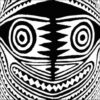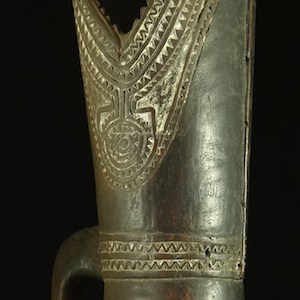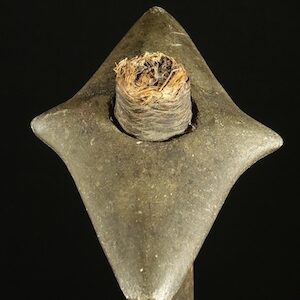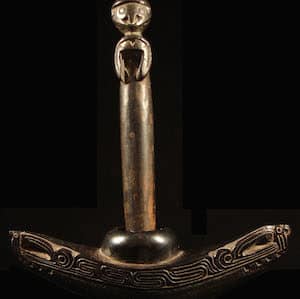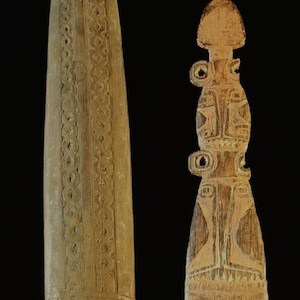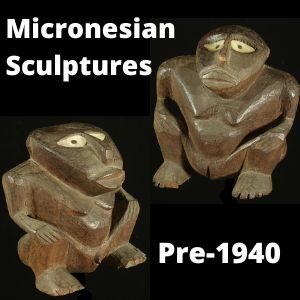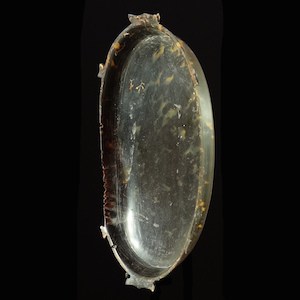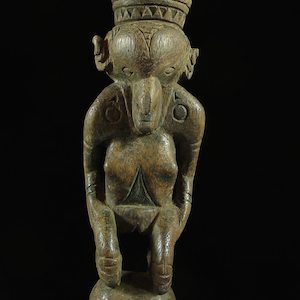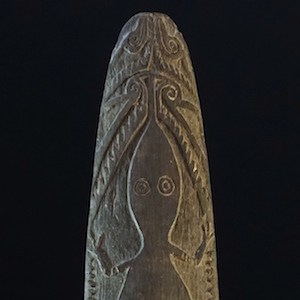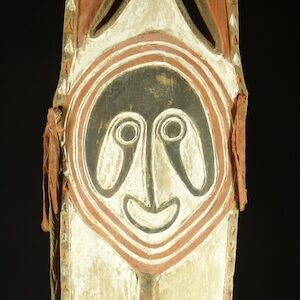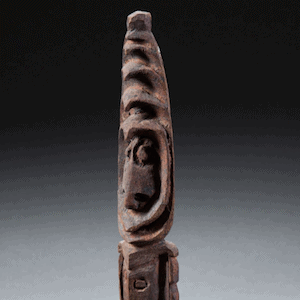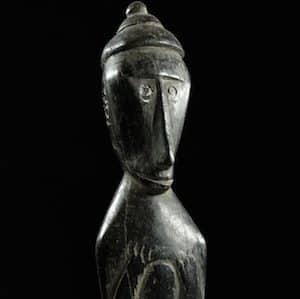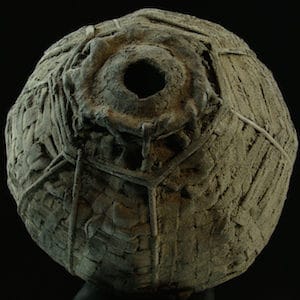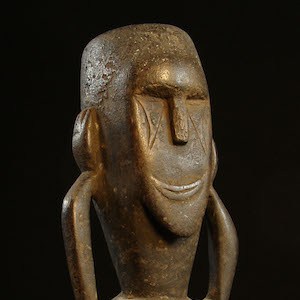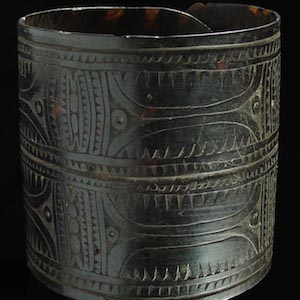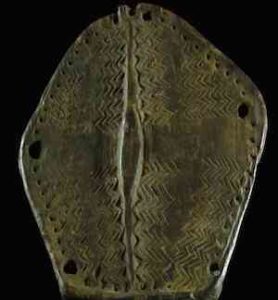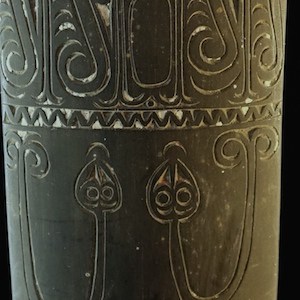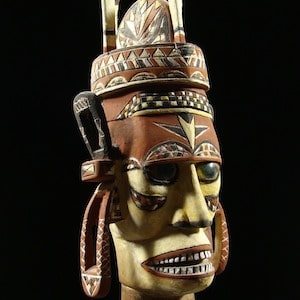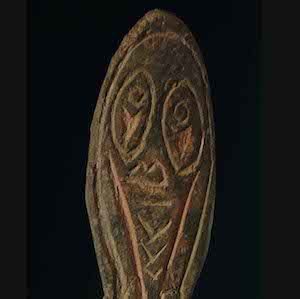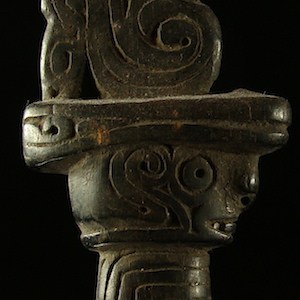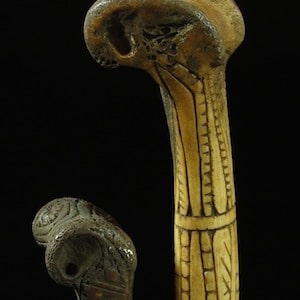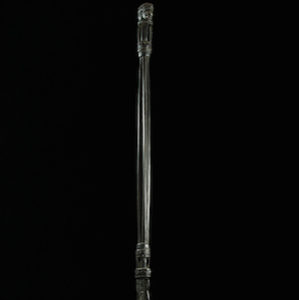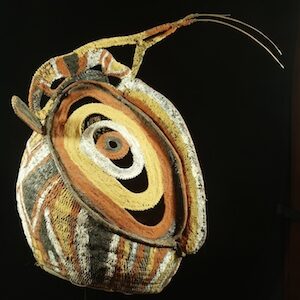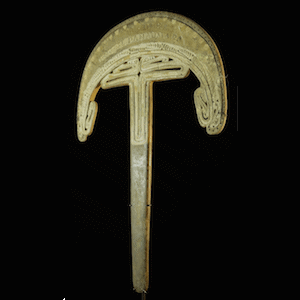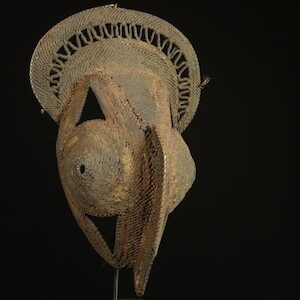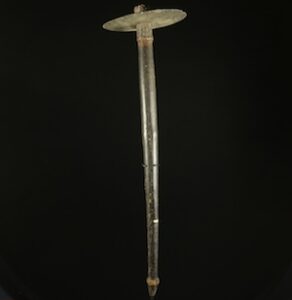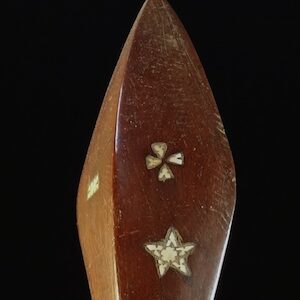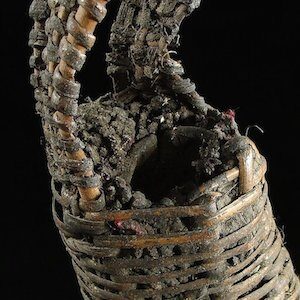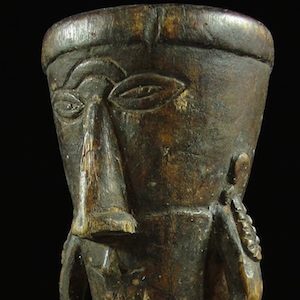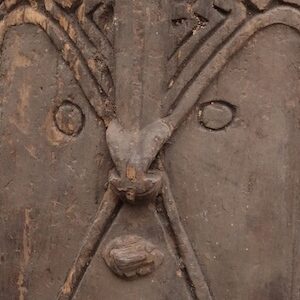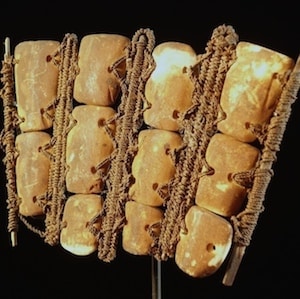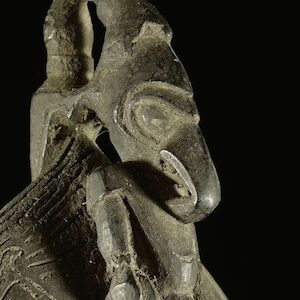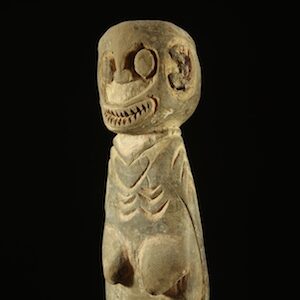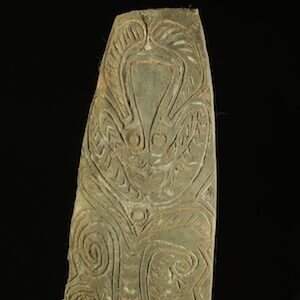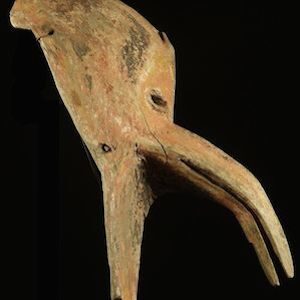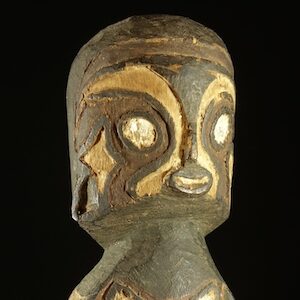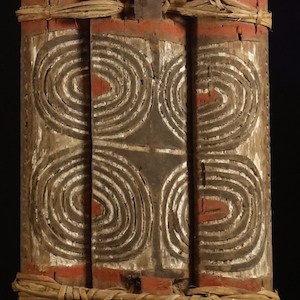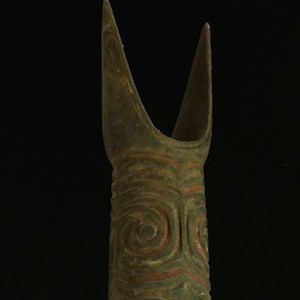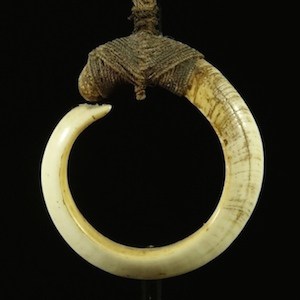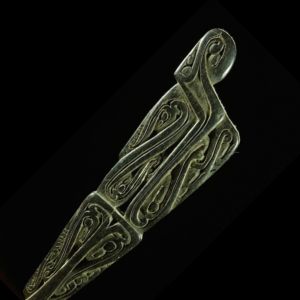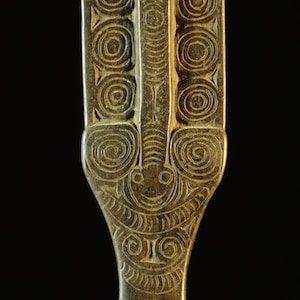Siassi Island Betelnut mortar
Siassi Island Betelnut mortar from the Huon Gulf Papua New Guinea for sale
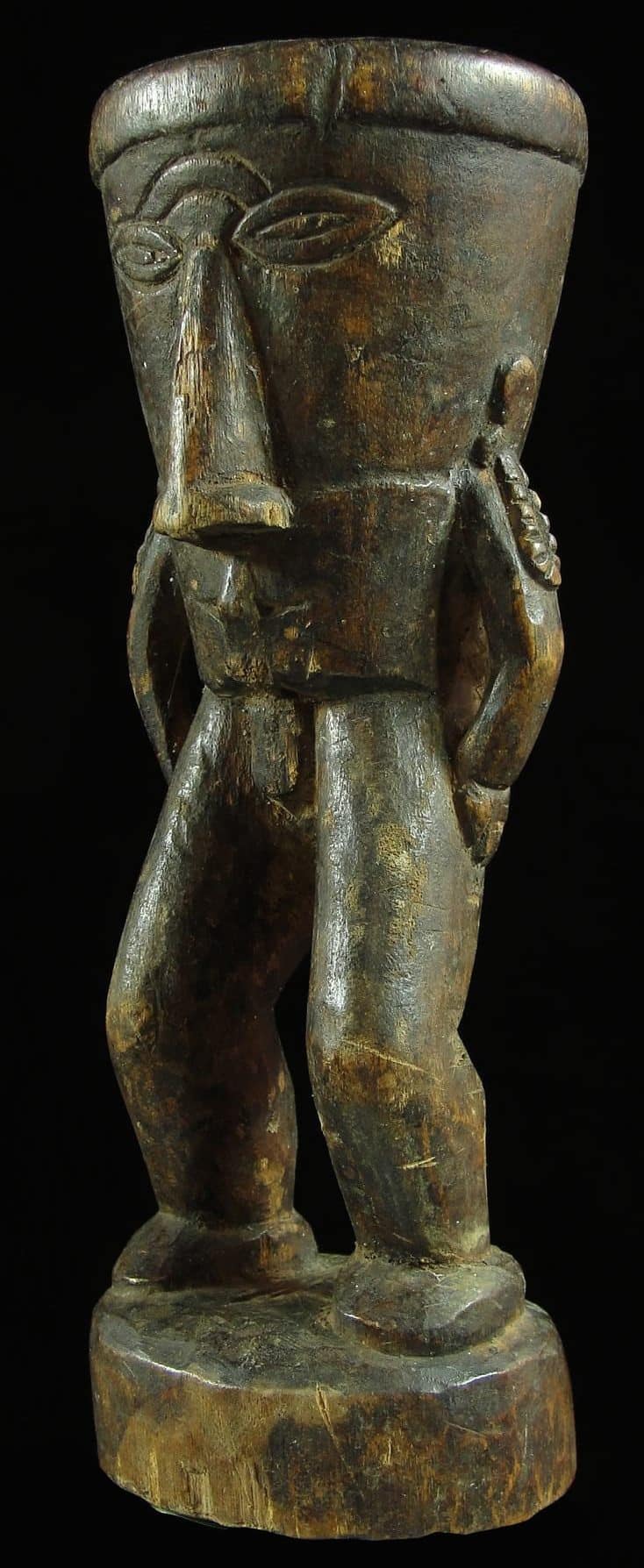
Object Type: Betelnut mortar
Locality: Western Siassi island Huon Gulf Papua New Guinea
Artist: Unknown
Circa: 1940
Height: 16cm
Description: This quirky old Siassi island betelnut mortar was field collected in around 2008. It has been used and has a good patina. there is still betelnut residue in the bowl Huon Gulf figurative betelnut mortars come in such an imaginative array they are I believe an under-appreciated form of oceanic art.
Price: $900 AUD
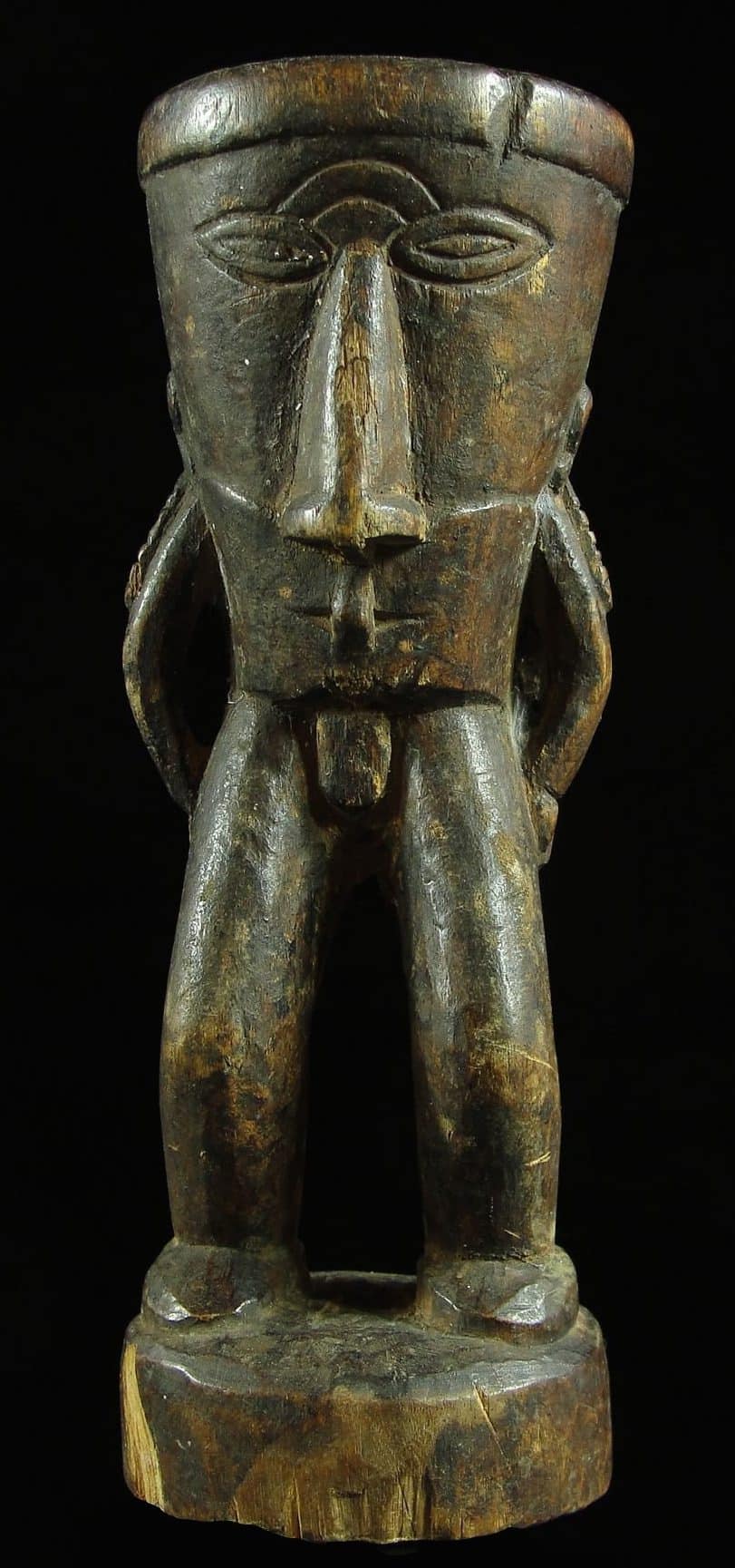
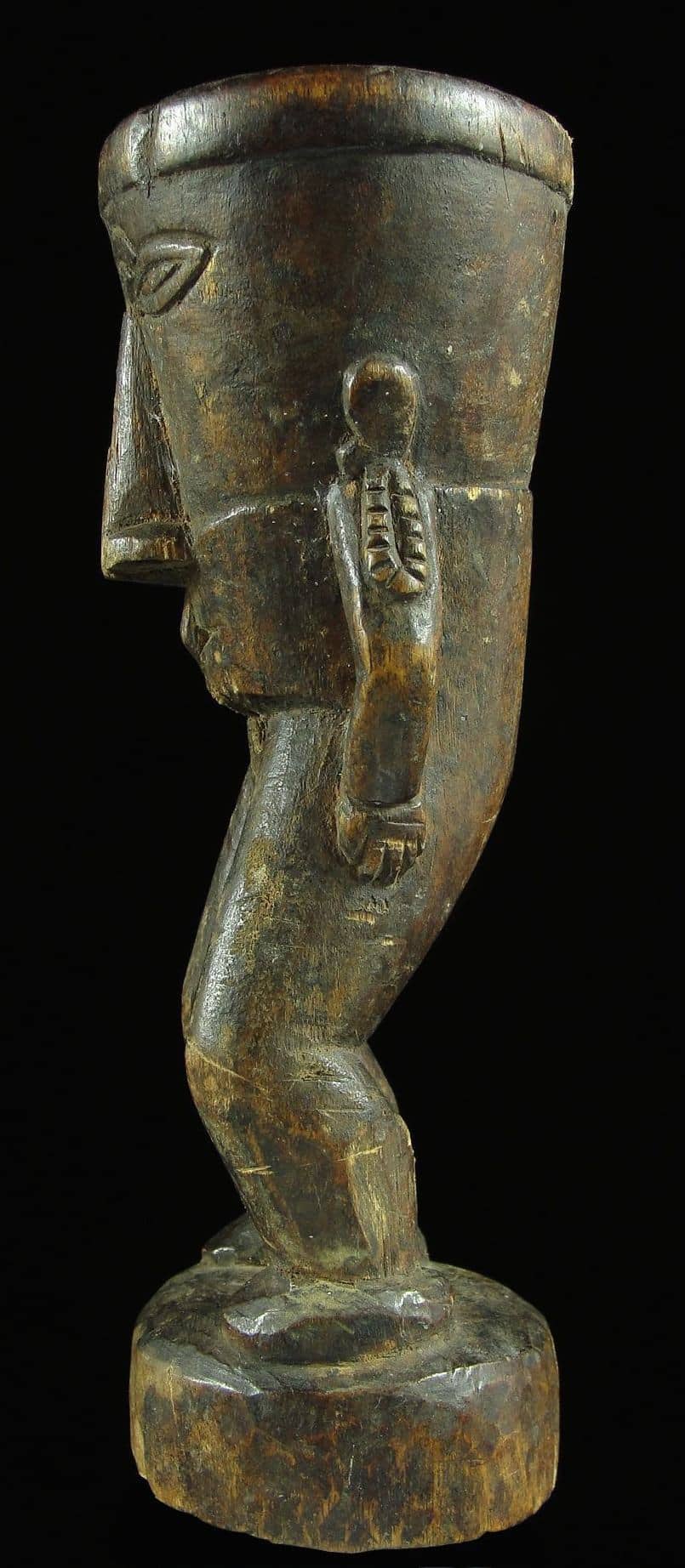
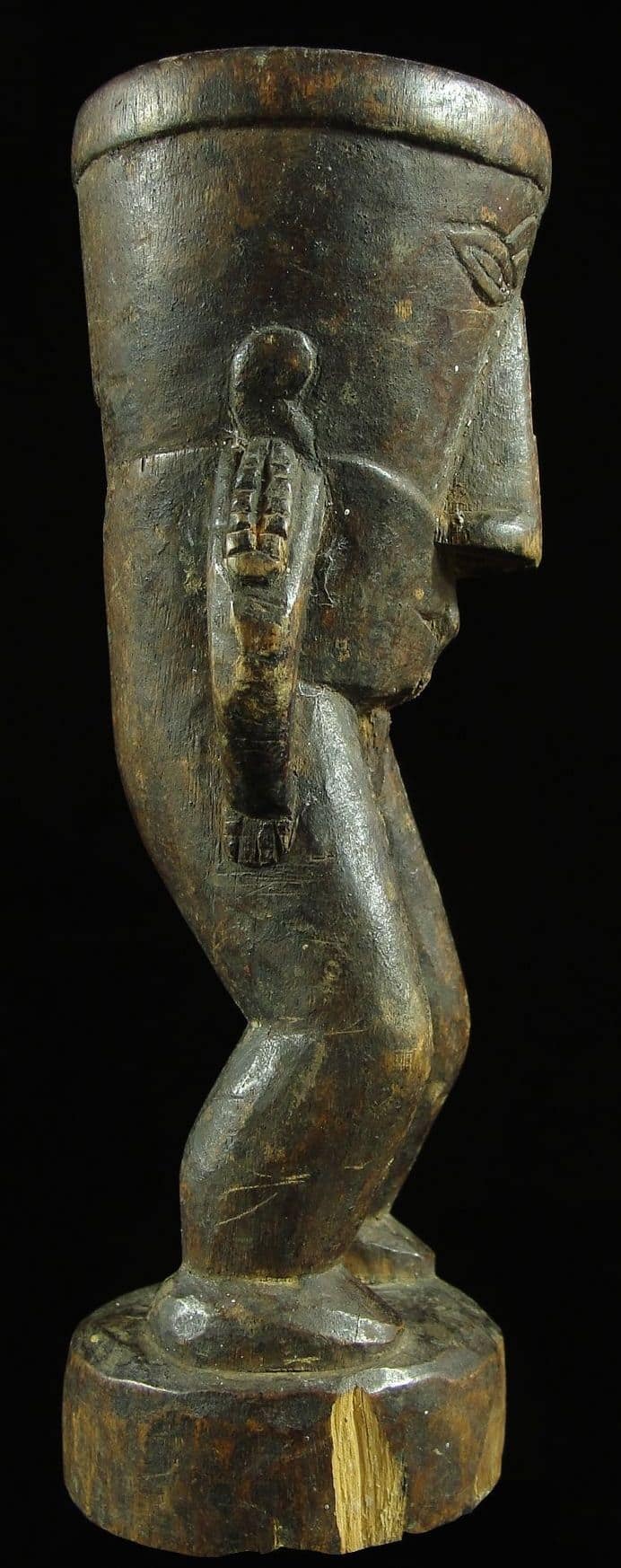
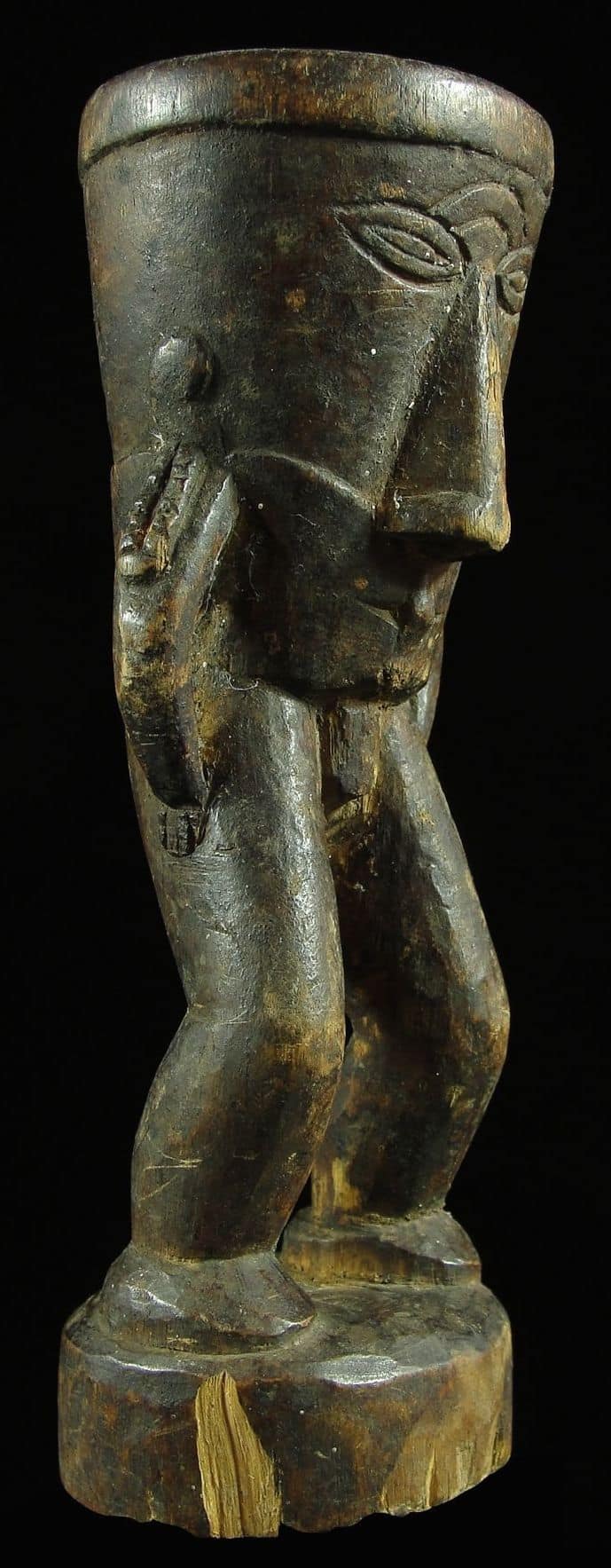
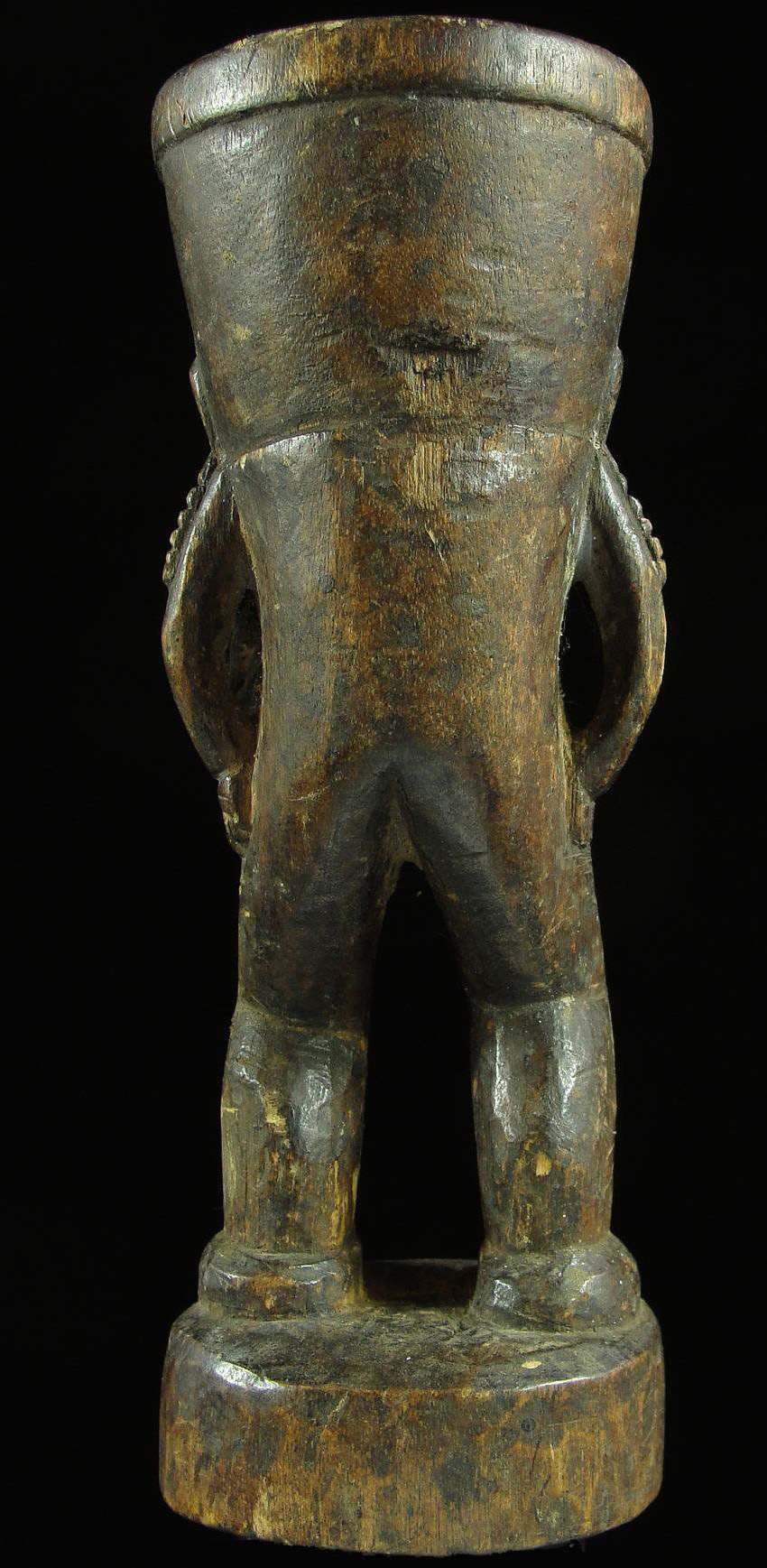
Other Art objects Available
Siassi betelnut mortar
A betelnut mortar, also known as a buai mortar, is a traditional tool. It is for preparing betelnut in various cultures across Papua New Guinea. Betel nut, also called areca nut, is the seed of the Areca palm tree and is often chewed as a mild stimulant.
The betelnut mortar is typically made from a solid piece of wood. It has a bowl-shaped cavity in which the betel nuts are placed for pounding or grinding. The shape and size of the mortar can vary depending on the specific cultural context and the availability of local materials.
To use the betelnut mortar, the betel nuts are placed in the cavity, and a pestle or pounder is used to crush or grind them into a paste or a fine powder. The pestle can be made of wood and is often held and operated with both hands, with a pounding or grinding motion.
Betel nut preparation is an important cultural practice in many communities. The crushed or ground betel nut is mixed with other ingredients, such as lime powder to create a betel nut quid.
The betelnut mortar holds cultural significance and is often used in social gatherings. It is a symbol of hospitality, social bonding, and traditional customs. The act of preparing and sharing betel nuts plays an essential role in cultural traditions.
In addition to its cultural and social significance, the betelnut mortar also serves a practical purpose. It helps crush and grind the betel nuts, making them easier to chew and releasing their flavours and stimulant properties.
It is an important tool that embodies the cultural identity and social connections within these regions.
This art is Tribal art. In reality, Tribal art or ethnographic art is art from around the world.
